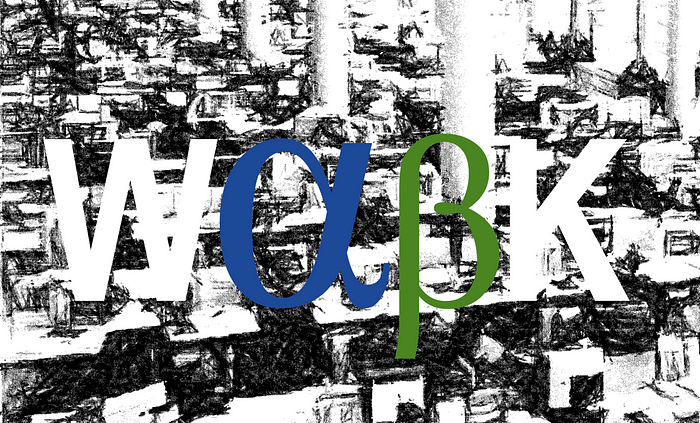Why go to the office?

The hybrid working debate has stalled. Advocates and sceptics alike continue to search for and share information that appears to support their position, even though in most instances it’s a matter of interpretation.
For most, those actually living it rather than just talking about it, hybrid working still boils down to the question of how many days they are required or suggested to be in the office. Whether that’s 2, 3, 2–3 or 2.5. Generally, for most organisations, it lands on around half our time. But credible sources tell us that for all those organisations who allow a degree of choice, it sits below that, at around 1–2 days.
We’re still struggling with the rationale for why we need to go to the office. Opponents of the office will tend us there isn’t a need, it’s foolish to keep trying to find one. Advocates will play the anecdotal card. Some managers will want their people where they can see them; while some instinctively feel that their teams work best when physically together, whether they can see them or not.
It’s the latter I’m fascinated by. I’ve long been an advocate of greater work flexibility but remain convinced of the power of human togetherness — not just for a quarterly dress-up and lash-up on a country estate, but frequently. Since the end of the pandemic, we still haven’t cracked a succinct rationale for a return to the office over and above a hunch that there’s probably something beneficial about it. Here’s my attempt. And it goes right back to the nature of work.
Alpha and beta work
Fundamentally, we need to distinguish between three things that people do when working together: co-ordination (organising stuff, that we’re skilled to do and that sits within our role, in readiness to do it), co-operation (doing stuff together, defined by our collective capabilities) and collaboration (creating new stuff together, experimenting, validating, refining and sense-checking). They’re often all described as collaboration, which is where our problem begins. Definitions, again.
Co-ordination and co-operation are what people do in their teams. They are subject to instruction (they know they have to do it) and they involve the use of existing processes, tools, technologies and working relationships. As in, the innovations of yesterday — everything we use today was once an innovation.
The activities are driven by need, and as such are planned, intentional and purposeful. They generate measurable productivity. Co-ordination and co-operation occur at the office when the parties involved agree that face time is necessary and they schedule it using blunt-edged Covid-era technology (booking systems). They know they need to be there to get something done. A number of messages later, and they know when and where. Overall, it’s an entirely rational process. We don’t want surprises; we want to know we can get our stuff done.
Which is why people are just as likely to be able to do them away from the office as in it — and why, therefore, such work can just about sustain 1–2 days a week together. We get a few things done in one another’s presence, then we go home and get the ‘real’ work done. What’s needed when at the office is all the usual stuff — connectivity, desks, meeting spaces, coffee. Most of which we have at home (the meetings in digital space, instead).
But confusing collaboration with productivity is an error at the heart of the office debate.
Collaboration is special, as it’s rare. It happens with people from different teams. Those who may have different perspectives, experiences and ideologies than our own. That’s because there’s no compulsion involved. People freely associate and develop ideas because they’re interesting or exciting. More interesting and exciting, that is, than the day job. The relationships involved are usually new, and so it takes time to build trust. None of this happens at the mythical plastic bauble, the ‘watercooler’. The identification and development of the relationships can be achieved both virtually and in-person, but in-person time is essential in the mix, particularly early.
Collaboration in the office can occur accidentally, or intentionally as part of the trust-building process. Yet such interactions rarely come with an agenda, and often with little specific purpose in mind. They’re an exploration. The driver is curiosity. The outcome is uncertain. It often leads to nothing at all. Sometimes it’s a planting of seeds. Overall, it’s an emotional process. What’s needed when at the office is the usual stuff — but also something else, conducive to the identification and building of relationships. We’ll come onto that.
The table below summarises the two types of work, which for convenience I’ve simply termed alpha and beta.

Organisations are designed for alpha work
Both types of work are essential in any organisation, one is not offered as superior to the other. Knowledge workers usually engage in both.
All innovation and no delivery is as sure to lead to disaster as the other way around. But it’s likely to be noticed far more quickly. The problem of all productivity and no innovation can take time to discover, by when it’s too late; the numbers often point to efficiency and success, until something in the market or environment changes.
Yet organisations are designed for alpha work. The systems and processes of hiring, managing, delivering, appraising, promoting and removing are invariably based on alpha activities. Individuals and teams are targeted and rewarded for productivity, not innovation. We don’t get fired not innovating anything, but we do for ignoring what we’ve been hired to do and instead trying to innovate.
So, when decisions are made about how and where to spend time, they’re based on the optimal means of delivering against known and directed objectives. Many organisations don’t even know how innovation occurs within their domain; they simply rely on luck. All of which is why offices are still thought of, designed and managed as centres of alpha work, and a return beyond 1–2 days a week is resisted.
Creating the pull
The physical workplace has to account simultaneously for both alpha and beta work. The difference post-Covid is that it must do so consciously.
To achieve balance in an organisation, two things need to happen.
Rebalancing work
The first relates to work itself. It requires an organisational awareness of what has been described, and the ability on the part of managers to articulate it. That is, to be able to move a decision as to whether to attend on the part of their colleagues from a simple consideration of personal productivity against alpha work objectives and the associated investment necessary to deliver them, to one reflecting a broader contribution to the organisation.
Which means when this contribution is made, valuing, recognising and rewarding collaboration and innovation, rather than just talking about it and confusing it with routine activity. Both awareness and recognition in this regard are a huge shift for many organisations.
Rebalancing the workplace
The second relates to the workplace. While it requires everything necessary to support alpha work, it also needs to offer that which draws in, encourages and enables beta work. It’s the creation of a gravitational space, a central and irresistible element of the environment that draws occupants in and stimulates an emotional desire to be present.
If we consider what is often focussed on:
Is superfast, super-reliable connectivity — better than at home or the café — likely to have us travelling in? Nope. Home broadband is adequate. But it absolutely must be there in the office if we do make the effort.
Is high street quality, barista-made free coffee going to get us out of our joggers? Nope. Our eco-friendly pod system at home is decent enough. But do we expect a pretty swirl in our flat white when we are present? We certainly do.
Will a physical expression of the brand, creating a sense of commitment and belonging have us on the station platform at 7am? Nope. It’s the new ‘shareholder value’. But we do like to feel it’s ‘our’ office when we come in.
In the workplace, therefore, we need to balance the provision for alpha work and beta work. But it’s not a case of different things for each. The elemental considerations are the same for both, they’re no longer optional. Yet what beta work requires is something else, too.
We’ve seen some radical reappraisals of the workplace since Covid. Yet those organisations who have completely removed the possibility of supporting alpha work have missed the point entirely. We’ll move from one type of work to the other in the same space. We don’t schedule beta work, it simply happens. Often while we’re doing alpha work or are there for the purpose.
And so, the workplace needs to have a fast lane for agenda-driven productive co-operators, who know what they want and need it now; and a slow lane for hesitant would-be collaborators who aren’t really sure what they want or when they’re likely to need it. Of course, we ourselves can — and are likely to be — both, too. Think of it as a café counter with a rapid grab-and-go offer for those who just need a coffee, and a more involved yet considered offer, for those who wish to dwell and talk.
For beta work, the gravitational space is essential because it taps into the emotional and curious. It doesn’t need to be glitzy, expensive, edgy or overly branded. It just needs to be enough to instinctively make us want to be there. Which will take us beyond our 1–2 days in the office, because while being together for this activity will be necessary, there will be other things to explore and only one place to do so.
Needless to say in conclusion, the space alone won’t be enough without a deeper understanding of the need for both alpha and beta work. Fundamentally it’s about humans and space in harmony. As it always has been. Who would have thought it?
